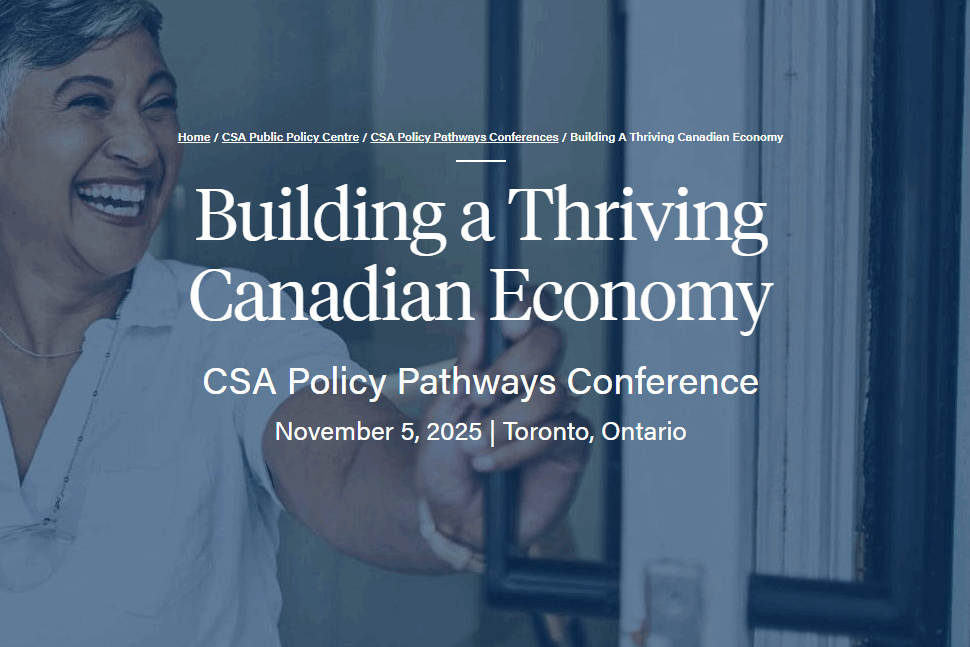By SCP Fellow Biju Pappachan | This post first appeared in Playback
When I read that the U.S. plans to impose a 100% tariff on foreign-made films, I didn’t think about Hollywood first. I thought about the crews, editors and emerging filmmakers here in Toronto. The people who make a living behind the camera and the underrepresented young creative workers we train every day at POV — a workforce development charity dedicated to training diverse talent.
This latest announcement from President Trump’s administration is a reminder that the cultural industries, including film, television, gaming and advertising, are not immune to politics. They are part of global trade. And when cultural trade becomes a weapon, creativity becomes collateral damage.
Canada’s screen economy is a jobs engine, contributing approximately 239,000 jobs and $14.05 billion to our GDP annually. Undermine that, and you undercut one of our most globally competitive sectors.
For decades, Canada has been one of the world’s busiest production hubs. Our country welcomes major U.S. shoots and hosts world-class crews. Every year, young Canadians, many from underrepresented communities, step onto a set for the first time, see their names in credits and start to build film and television careers.
A 100% film tariff could undo all the investments and efforts that have built this momentum, and here’s why. Canadian productions often rely on U.S. partnerships for financing, equipment and distribution. Tariffs that double the cost of foreign content entering the U.S. would make those deals much harder to secure. Coproductions would stall and costs for imported gear and set materials would get higher. Independent films would never cross the border.

Due to this uncertainty, productions would inevitably slow and the first people to lose work would be the crew, trainees and new graduates — the very creatives POV strives to help break into the industry.
Even in the U.S., critics are calling the proposed move misguided. Actor George Clooney said it best, that if “[Trump] wants to fix [the industry], then he should talk about a federal incentive.”
Short-term implications
The threat alone could have dire consequences and has already started to stress the Canadian creative industries, injecting uncertainty into planning, financing and production and shaking investor confidence.
For the average Canadian, the effects of film tariffs might feel abstract. But for the young creative workers we train at POV, tariffs are a very real threat. If production slows, it’s these new creative workers who will lose out on internships, apprenticeships and the first jobs that turn their training into careers.
At a recent in-person gathering at POV, where new creatives and independent filmmakers swap stories, the anxiety was clear. As one filmmaker put it, “tariffs could leave small productions stranded and crews without work … budgets are already thin and the extra costs risk making projects unviable.”
In the abstract, it might feel like film tariffs would squeeze corporations, but the reality is that they would squeeze ground-level crews and filmmakers across the industry. Not only do our screen industries generate export revenue and create domestic jobs, they showcase Canadian stories on the global stage. Weakening this sector would undermine both our economic and our cultural sovereignty.
Next steps
Canada’s politicians, policymakers and funders at all levels need to double down on support for this multibillion-dollar industry.
At the federal level, Ottawa should move quickly to secure tariff exemptions for essential screen industry goods such as gear, equipment and set construction. We need to oppose U.S. film tariffs that would tax imported films, TV shows or digital media as “intangible” content. Our trade diplomats should be in Washington now, making the case that tariffs would damage both sides of the border.
The U.S. film and television industry relies heavily on Canadian production services; everything from Toronto sound stages and visual-effects houses to post-production teams in Montreal and Vancouver. In 2023-24, 86% of all foreign film and TV projects shot in Canada originated from the U.S., supporting thousands of American-backed jobs here and reducing costs for those companies. Disrupting that network would raise expenses for U.S. producers and slow their release schedules, hurting American just as much as it would hurt Canadian crews.
At the provincial level, we can protect our global competitiveness by adjusting tax credits to neutralize tariff-induced production costs, fund training and subsidize paid job placements that sustain the entire screen production ecosystem, including grips, lighting and post- production, so entry-level and diverse talent aren’t casualties.
And at the municipal level, cities like Toronto need to keep doing what they do best: removing barriers, streamlining permits and supporting local suppliers.
Time to stand up
Some argue that U.S. tariffs could push Canada to rely more on its own domestic productions, and there’s some truth to that. A moment like this could inspire new investment in Canadian stories and storytellers, giving local producers a chance to fill the gap if U.S. work slows. But the domestic market alone can’t sustain the full scale of Canada’s creative workforce. Our industry is built on collaboration, coproductions and international distribution. What we make here often finds its audience abroad, especially in the U.S., our largest trading and cultural partner.
That’s why tariffs could be so dangerous. They don’t just threaten investments and budgets; they threaten the reach of our stories. The creative economy is one of Canada’s greatest exports because it carries our values, diversity and identity to the world. Tariffs on films aren’t just about money — they are about who gets to tell their story and whether that story is allowed to cross borders.
When tariffs threaten to strike creativity and culture, we can’t afford to stay quiet. This is the moment for Canada to stand up for its filmmakers, crews and cultural sovereignty. Film and television are not luxuries; cultural production is a strategic sector that delivers exports, jobs and soft power. Just as we negotiate for agricultural or industrial tariff exemptions, cultural production deserves equal protection.
By investing in our film and television industry, safeguarding cross-border partnerships and making sure young, diverse talent continues to find opportunity here at home, we can protect and strengthen the voices of the next generation of Canadian storytellers.
Biju Pappachan is executive director of the charity POV, where he leverages his extensive experience in driving systemic change to advance the organization’s mission of promoting economic inclusion. He has developed and launched innovative workforce development strategies that support BIPOC and diverse young creatives. He is currently a research fellow at policy non-profit Social Capital Partners.
Share with a friend
Related reading
Hype or help? Can crypto and stablecoins solve economic inequality?
Some cryptocurrency advocates are promoting the use of stablecoins as a common currency, arguing that this new currency could help the cost-of-living crisis and promote economic equality – particularly for young people. Law professor, money expert and SCP Fellow Dan Rohde is not convinced that crypto can help address economic inequality. In this explainer, he breaks down what stablecoins are and aren’t, and how to think critically about their promises.
Building a thriving economy: CSA Policy Pathways Conference
The CSA Policy Pathways Conference convenes leaders, thinkers and changemakers across government, business, community and academia to confront the pressing questions shaping our economic future. How can we build resilience in the face of global uncertainty? What will it take to unlock innovation and ensure its benefits are broadly shared? How do we design policies that promote competition, inclusion, and financial security? Join us on November 5, 2025, in Toronto, as we explore how we can take bolder steps toward a more resilient, innovative and equitable economic future.
Budget 2025 should bolster employee ownership to strengthen Canada’s economy | Canadian Dimension
Budget 2025 offers Canada a chance to make employee ownership permanent by extending tax incentives for employee ownership trusts (EOTs) and worker co-ops. In Canadian Dimension, Simon Pek, Lorin Busaan and Alex Hemingway write that doing so would boost productivity, reduce inequality and secure business succession, while keeping jobs and decision-making local. A modest investment promises significant economic and social dividends.


